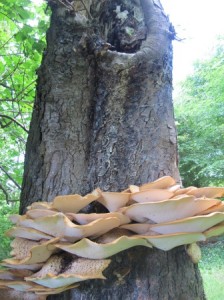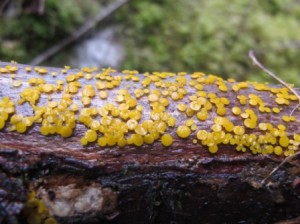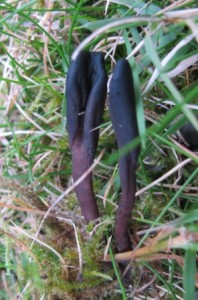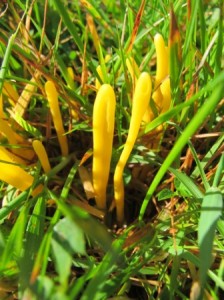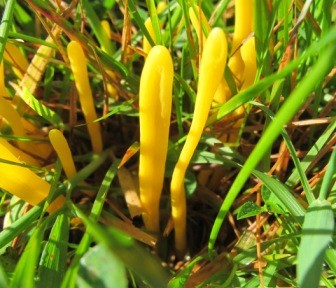
So this is my final blog as a BTCV natural talent apprentice, although really it is not the end but just a change in title and a continuation of what has become so important in my life. Now I shall be a freelance “mushroom detective”….or something like that!
Wow it’s been such an amazing year and a half. It’s hard to remember back when mushrooms and plants weren’t a key focus of my time and thoughts. For the first time in my life I feel I have specialised knowledge that I can share and that feels amazing.
Teaching what I’ve learnt has become one of the key outcomes of this apprenticeship. Its what I’m really passionate about – helping people connect back with the land. Seeing things that go unnoticed, highlighting the interconnections between plants and fungi and showing how humans can impact so dramatically on those connections and therefore the diversity of our environment.
I’ve taught a variety of groups from the National Trust for Scotland (NTS) gardeners to community groups and political activists and I always leave feeling really inspired by people’s enthusiasm to learn about fungi. Mushrooms are weird, essential for life in so many ways and many want to know about them. It’s great and something I plan to continue to do.
Learning how to identify plants and mushrooms has opened up so many possibilities for me. An important one is being able to gather and also teach about edible and medicinal plants and mushrooms. For me this is essential in increasing desire for conservation outside of protected areas. So much of our countryside has been shaped by human use and value of different plants. The value system of our society continues to shape it.
I hope to play a part in increasing the value our society place on the natural world, particularly the fungi which are often forgotten. For instance I read an environmental impact assessment on a Scottish ancient woodland, come conifer plantation, come future coal mine. It said “forest flora of little ecological value” If fungi had been included in the survey it would have been noted that the forest floor was rich in winter chanterelles, wood hedge hogs and other fungi normally found on sites considered “ancient woodland”. These fungi are not only ecologically important but also a source of protein for insects, animals and humans alike, which if left alone will continue to be a food source without any effort on our part. There is much to work for in our perception of what is valuable!
The survey work I completed as part of my apprenticeship led me to visiting some incredible parts of Scotland. I’ve made over 1000 records, including two new species to Scotland and have written reports for the NTS on sites where the fungi were previously unrecorded. This will help the NTS to manage their grasslands with fungi in mind and increase awareness of how important it is to maintain these rare grassland sites which have not been damaged by modern agriculture or other development. I just found out there will be some funding for me to continue this work next year which is incredible! Very Happy.
So I want to say a huge thank you to BTCV, the National Trust for Scotland and the Royal Botanic Gardens Edinburgh for all their support, creativity and knowledge. Special thanks go to Professor Roy Watling whose dedication to the fungi, enthusiasm and ecological wisdom has inspired me beyond words and to Lindsay Macinlay who gave me a balance of support and responsibility in a very motivating way! Two better mentors I couldn’t have wished for Thanks also to John Mcfarlane for his bounce and enthusiasm for the natural talent scheme, for recognising how important it is and shouting it out to the world!!
To anyone interested in Fungi, wildflowers and foraging fun, should you want to arrange a wild food walk, fungi foray or identification workshop or if you have any questions, please do get in touch at spadali@hotmail.com.
Thanks again

